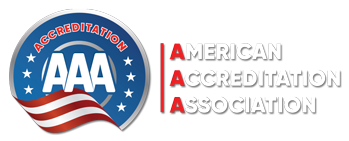There are seven stages included for the development and preparation of the training material according to the best international practice:
1. Identification of Needs
This is the planning stage where the developer can prioritize and strategies on issues to consider. The developer is therefore required to:
- establish the need for the learning material;
- evaluate the existing materials;
- compare the existing materials with identified outcomes of learning reflected in the curriculum/program/module;
- identify gaps between the two;
- understand quality principles for developing learning materials;
- ensure that a system for managing material development quality is in place;
- outline activities or project plan for developing learning materials (Gunnt Chart);
- identify constraints; and
- consider the needs of the target group.
2. Input Sources
Inputs are those aspects that the developer needs to bring together when developing learning materials. The developer needs to:
- identify the learning events or outcomes of learning stated in the curriculum/program/module;
- consider the background and needs of the potential learner; o consider different types of learning modes;
- link materials being developed to the learning process;
- identify the learning setting;
- identify the learning media;
- state the learning notional time in hours;
- state needed evidence that would show achievement.
3. Resource Mobilization
The overall objective of resource mobilization is to make material reach people it is intended for. Considerations should be made to:
- determine resources needed for the efficient implementation of the
- curriculum/program/module (financial, human, infrastructure, technological);
- develop the learning material;
- synthesize quality requirements;
- match learning with resources;
- emphasize on learner centered approaches;
- infuse Generic Skills;
- determine the layout of the material;
- sequence learning activities;
- infuse self assessment questions/tasks;
- determine the production cost and implications thereof;
- determine availability of storage facilities; and
- determine the printing method;
4. Piloting
Piloting is done to determine the strengths and weaknesses of the developed material in order to take necessary remedial actions prior to its full implementation. The developer is expected to:
- develop monitoring instruments for piloting;
- identify institutions and/or learners for piloting;
- use a variety of learning methods;
- encourage and receive feedback from the learners and trainers on structure and content, approaches, duration and assessment strategies;
- provide frequent feedback to the learners and trainers; and
- use feedback for ongoing adjustments in the learning process.
5. Revision and Amendment (After Piloting)
Once the material has been piloted, the developer needs to:
- amend it, as necessary, in accordance with feedback from those involved in the trial run to meet the needs of learners, trainers and industry, based on data gathered during the pilot process; and
- prepare the ground, or market it, for full implementation.
6. Implementation
At this stage it is considered that the material can be used to deliver the program. However, care must be taken to ensure that the material would continue to:
- support acquisition of relevant and appropriate knowledge, skills and attributes;
- show linkage of learning activities and the world of work;
- address issues of content and application;
- provide formative and summative evaluation, as well as feedback; and
- determine assessment resources;
7. Evaluation
Revision and review of the material should be done regularly, and must, as much as possible be linked to that of the relevant curriculum/program/module.
In order to determine the value factor of the material, evaluation instruments must be developed and implemented to:
- determine the correlation between the identified needs and the impact of the material on learner’s performance
- establish support of learning material by learners, trainers and industry; and
- establish content and structural correctness.
- There are three types of training evaluation:
- (1) training session reaction assessments;
- (2) learning assessments; and
- (3) training impact assessments.
